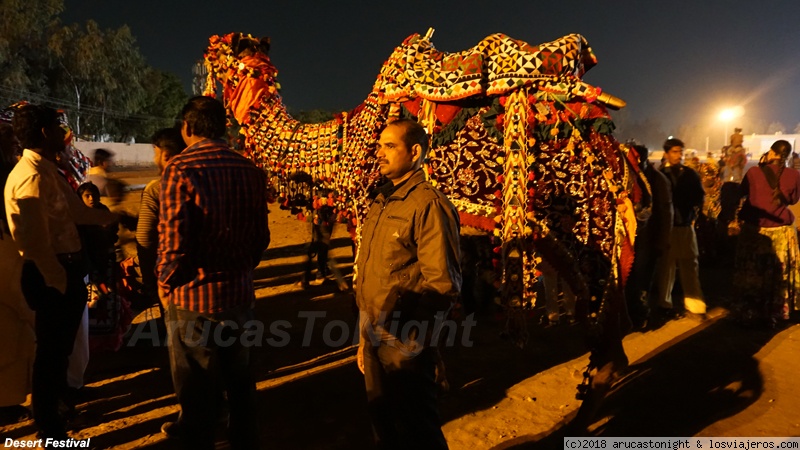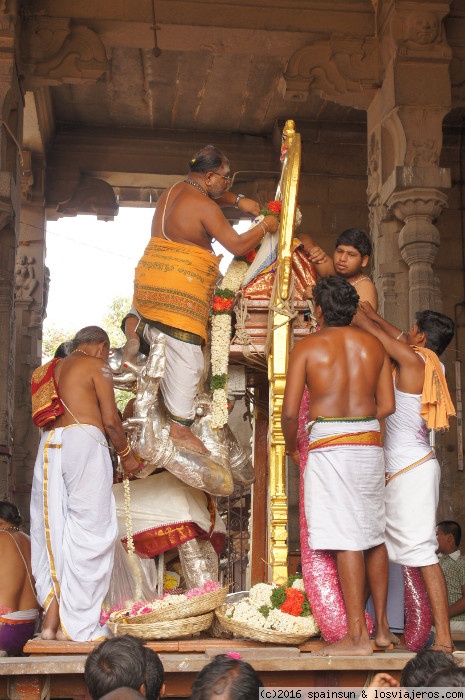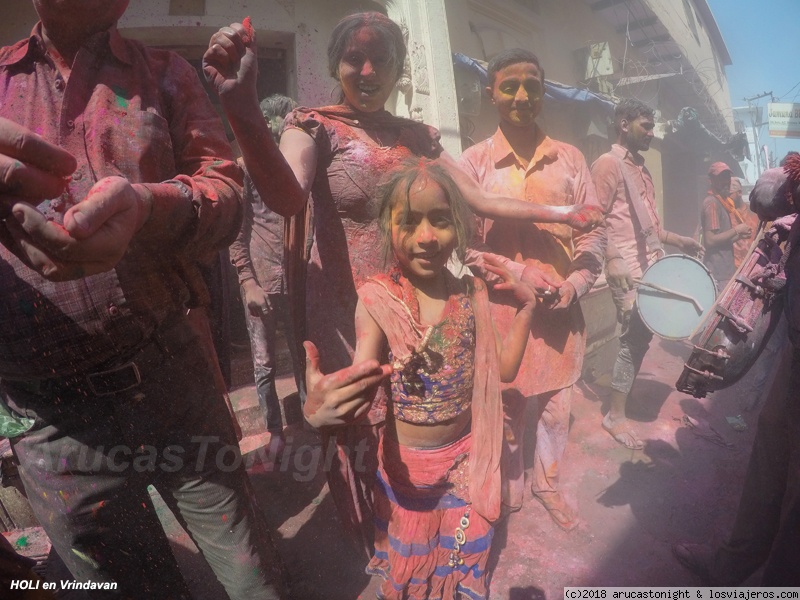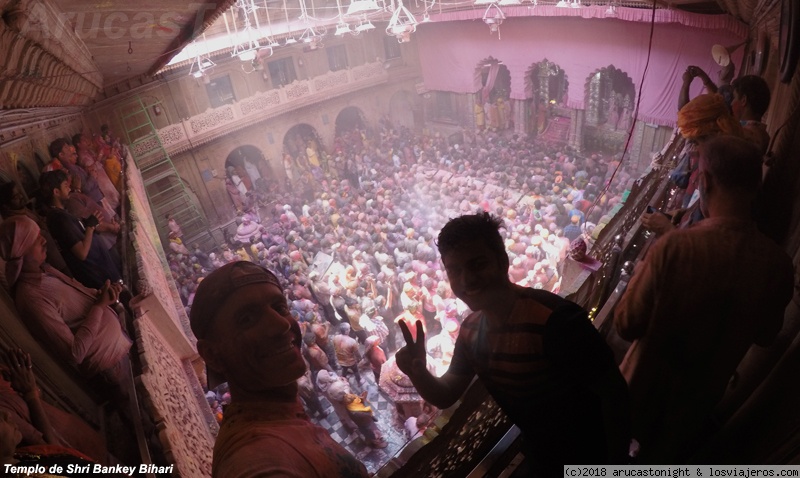Autor:
Oficinas-Turismo Fecha: Sabado, 05 Enero, 2019 ⭐ Puntos 4 (2 votos)
India is a land of festivals. It encompasses people from different religions and cultures and thus celebrates numerous religious festivals. The entire atmosphere is filled with joy and enthusiasm during the festive season.
Indians give special importance to their festivals. Special arrangements are made for the celebration of various festivals each year. Be it the villages or the big cities there is joy all around. All the places are decked up during the festival season.
Bikaner Camel Festival
Celebrated: Bikaner (Rajasthan)
Festival Dates: 12th- 13th January 2019.
Camel Festival, Bikaner is a sought after event in Rajasthan. Organized by the Department of Tourism, Art and Culture, Bikaner Camel Festival is a yearly event in January that Bikaner celebrates in honor of the ship of the desert, Camel. The festivities are at par with the other celebrations of Rajasthan. The event mainly includes spectacular camel performances like camel dances, camel races, neck shaking camel rides etc.
The Camel Festival in Bikaner is a two day affair. The festivities starts off with a colorful parade of beautifully adorned camels against the backdrop of majestic Junagarh Fort. Enjoy the spectacular displays of camels dressed in vibrant bridles, traditional necklace and heavy anklets showing off wonderful footwork to the lovely tunes on desert sands. Also witness the array of camel race events, camel games and other cultural performances. Hundreds and thousands of tourists and locals revel in this traditional festival. Feel absolute pleasure in the delightful ambiance.
Adivasi Mela
Celebrated: Bhubaneshwar Adivasi Ground (Orissa)
Festival Dates: 26th Jan to 8th February
The Odisha State Level Annual Adivasi Exhibition, popularly known as Adivasi Mela, showcases the art and craft of the tribal communities. The special highlights of the fete are the forest products and tribal products, exhibited and sold as well as cultural programmes presented by tribal communities. This is a rare occasion to have a glimpse of the unique tribal culture of Odisha in the urban city of Bhubaneswar. Local residents eagerly wait for this annual opportunity to buy their yearly needs while tourists throng to get an overall picture and feel of the tribal society.
Reh festival
Celebrated: Arunachal Pradesh
Dates: 1st to 4th February 2019
Celebrated during February and July, Reh is a vibrant festival of the Idu Mishmi community, observed to seek prosperity and welfare of families and crop. Rituals, dances, cuisine and folklore are important during this the celebrations.
Reh is the most significant festival for the Idu people of the Mishmi tribe. The Idus living in lower elevations and plains celebrate the festival during February, while the tribesmen living in snowy areas celebrate it during summers when the climate is warm and shoal of fishes can be found in the rivers. "Yunyiphri", the preparation of rice beer, is undertaken three to four months before the actual celebration. This is important to the tribe the brews come out well.
Beneshwar Festival
Celebrated: Dungarpur (Rajasthan)
Festival Dates: 15th – 19th February 2019.
Baneshwar Fair is attended by the hundreds of tourist, an important festival in India, taking place in Dungarpur, Rajasthan. This festival is an integrated culture of the place. This fair is organized partly by the tribal community in the state. It reflects their customs and traditions. The fair revolves around many rituals and bears a religious significance. The name "Baneshwar" came from the "shivlinga" of the Mahadev Temple in the region where the fair takes place presently. The tribes called "Bhils" celebrate the festival with pomp and show.
The popularity of this fair is not confined alone to the state of Rajasthan. Madhya Pradesh and Gujarat show equal enthusiasm during this fair. There are number of stalls and shops that specialize in selling handicraft items made by the tribal group. If you want to buy some of these unique items from the fair plan your India travel today! The items in available in this exhibition reflects the varied cultural attributions of the place. Attractions of Baneshwar Fair include shows with animals, magic, puppet dance, and folk songs.
Desert Festival
Celebrated: Jaisalmer (Rajasthan)
Festival Dates: 17th -19th February 2019.
The Jaisalmer Desert Festival is an annual event that take place in February month in the beautiful city Jaisalmer. It is held in the Hindu month of Magh (February), three days prior to the full moon. The festival is celebrated amidst the beautiful dunes of the Thar Desert in the Sam dunes (42 kilometers from Jaisalmer). Romantic, remote and unspoiled, the location comes to life during the three day extravaganza of the delights of the desert.

The celebrations of this festival make the desert come alive with color, enthusiasm and happiness. The festival commences with a procession in the morning from the Jaisalmer Fort to the Shahid Poonam Singh Stadium. The locals dress in traditional and bright costumes. They sing and dance depicting the tragedies and accomplishments of the desert. The Gair and the fire dance are highlights of the festival. The Kalabaz or the Nat’s are a group of local nomads who are popular for their gymnastic acts. The Bhopa’s Langhas and Manganiars create an enchanting environment with their poignant folk Music recitals and ballads
Be a spectator of rare competitions like camel polo. Cheer for camel races. Gymnastic stunts on camelback and camel formation dancing are the crowning jewels of the festival. These competitions are followed by the Border Security Force Camel Tattoo. Tug-of-war, turban tying, Maru-Shri (Mr. Desert competition) and the longest moustache competition are others allures. The grand finale of the festival is the Rajasthani folk concert following an Air Force display, cricket match and parachuting. This festival end on Poornima (full moon day) in the Sam dunes with the “Sonar Qila” Jaisalmer Fort in the background creating a fairy-tale ambiance.
Thrissur Pooram
Celebrated: Thekkinkadu Maidanam (Thrissur District)
Festival Date: 13th May 2019
A festival celebrated with a grand display of caparisoned elephants, dazzling parasols, and percussion music, the Thrissur Pooram is a magnificent spectacle merging the spiritual and cultural essence of Kerala. Celebrated in the Malayalam month of medam (April-May), the pooram is held at the Thekkinkadu Maidanam in Thrissur. This yearly temple festival was the brain child of Shakthan Thampuran, the Maharaja of Kochi, who organized the festival with the participation of 10 temples. The festival sports an enthralling line-up of vibrantly decked up elephants and is marked by the kudamattom ceremony. Involving swift and rhythmic changing of brightly coloured and sequined parasols, the kudamattom ceremony is one among the highlights and is a keenly watched event.
Yuru Kabayat (Ladakh)
Celebrated: Lamayuru Monastery (Ladakh)
Festival Dates: 29th – 30th June 2019.
Yuru Kabgyat, Festival in Ladakh Celebrated for two days, is an essential event for the followers of Buddhism. The festival is celebrated with great zeal and enthusiasm at the Lamayuru Monastery. The fiesta enjoys such popularity that Buddhist from worldwide and Lamas from Tibet, Japan, Korea and China head towards Leh-Ladakh to attend the festival. Natives and tourists could be seen marveling at the masked dance performances lasting for several hours.
The Yuru Kabgyat Festival is somehow dedicated to the Yama and Padmasambhava who are the meticulously delineated in the dance drama. Yama is considered to be the Lord of Death and Padmasambhava as the Second Buddha. He is also revered as the protector of the creatures and stallions and is also regarded as the Lord of Wealth.
Rath Yatra – Puri
Celebrated: Puri (Orissa)
Festival Dates: Start on 4th July and return on 12th July 2019
The most important festival of Odisha, Ratha Yatra or the Chariot Festival (earlier known as Car Festival to the Europeans), is held with religious grandeur at Puri, the seashore town in Odisha. The presiding deities of Sri Mandira, the main temple, Lord Jagannatha, Lord Balabhadra and Goddess Subhadra, with the celestial wheel Sudarshana are taken out from the temple precincts in an elaborate ritual procession, called Pahandi and seated on three colorfully decorated huge chariots, which are then drawn by hundreds and thousands of devotees on the bada danda, the grand road to the Gundicha temple, some three kilometers away to the North. After a stay for nine days, the deities return to their abode in the same way. The Return Journey is called Bahuda Yatra . Also known as Gundicha Yatra, Ghosa Yatra, Navadina Yatra, Dasavatara Yatra and by a variety of other names, Ratha Yatra is the grandest festival of Odisha. Everything is on grand scale befitting the great Lord. Full of spectacle, drama and color, the festival is a typical Indian festival of huge proportions.
Festival: Hemis Tse chu
Celebrated: Hemis (Ladakh)
Festival Dates: 11th -12th July 2019
Hemis, located 45 Kms. South of Leh, Is one of the most accessible and visited gompas in Ladakh, besides being most important in terms of spiritual hierarchy. It has population of about 500 resident monks. The Ladakh royals continue to be ardent patrons of this monastery. Celebrated at Hemis Monastery. Hemis festival is in the honour of Guru Padma Sambhav’s birth anniversary. This Buddhist festival in Ladakh adds cultural richness to the Fairs and Festivals of India.
Performed by Lamas, the Masked Dance is the highlight of the festival. It exemplifies good prevailing over evil. The participants wear vibrant costumes and bright masks. Slow dance movements and fanciful expressions fascinate the onlookers. The music is characteristically marked with sounds of drums, trumpets and cymbals. Every colourful mask portrays a different figures in the legend. The Padmasambhava dance that shows the victory of the ruta demons includes Yama-the God of Death Trakpo, the vindicator of all demons. Witness the vibrancy of traditions at famous festivals Himis Tse Chu in Ladakh!
Phyang Tserup (Ladakh)
Celebrated: Phyang Monastery (Ladakh)
Festival Dates: 30th -31st July 2019.
Phyang Tsedup Festival. It is celebrated in Phyang Monastery in Ladakh (20 km from Leh) and dedicated to Jigten Gombo, founder of Dringumpa Monastic Dynasty. Witness smiling Lamas in vibrant attire and portraying different characters of the dance drama.
Thankha of Jigten Gombo is also worshipped and marks the triumph of good over the evil. However, dance remains the Centre of attraction. Monks wearing rich silk costumes perform Chham and worship their deity. This festival is especially remarked for the enthusiasm and energy. Masks steal the limelight of the festival. Numerous messages of Lord Buddha are displayed in the carnival. Exhibition of Buddhist artefacts also take place.
Nehru Trophy Boat Race
Celebrated: Punnamada Lake, Alappuzha
Festival Date: 10th August 2019
This is a popular Vallam Kali held in the Punnamada Lake near Alappuzha, Kerala, India. Vallam Kali literally means boat play/game, but can be translated to boat race in English. The most popular event of the race is the competition of Chundan Vallams (snake boats). Hence the race is also known as Snake Boat Race in English The Nehru Trophy Valam kali is conducted on the second Saturday of August every year and is a famous tourist attraction.
Pushkar Fair
Celebrated: Pushkar: Ajmer (Rajasthan)
Festival Dates: 04th -12th November 2019.
The Pushkar Fair, also called the Pushkar Camel Fair or locally as Kartik Mela or Pushkar ka Mela is an annual multi-day livestock fair and cultural fête held in the town
of Pushkar (Rajasthan, India). The fair starts with the Hindu calendar month of Kartik and ends on the Kartik Purnima, which typically overlaps with late October and early November in the Gregorian calendar. The Pushkar fair alone attracts over 200,000 visitors.
The Pushkar fair is one of India's largest camel, horse and cattle fairs. Apart from the trading of livestock, it is an important pilgrimage season for Hindus to the Pushkar lake. Pushkar fair has also become a significant tourist attraction for domestic and international travelers, given the cooler season, the abundance of colorful cultural themes. Cultural events and competitions include dances, tug of war between women teams as well as men teams, the "matka phod", "longest moustache" competition, "bridal competition", camel races and others.
Men trade their livestock, which includes camels, horses, cows, sheep and goats. Rural families shop at the handicraft stalls full of bracelets, clothes, textiles and fabrics. A camel race starts off the festival, with music, songs and exhibitions to follow.
The peak celebrations occur over the last five days from the Kartik ekadashi to Kartik Poornima, the full moon day of Kartik in Hindu calendar.
Konarak Festival
Celebrated: Konarak (Orissa)
Festival dates: 1st to 5th Dec 2019
Thirty five km. to the north-east of Puri is the World Heritage Monument, the Sun Temple of Konark. As a fitting tribute to the immortal artisans of this amazing edifice, Odisha Tourism organizes a Dance Festival from 1st to 5th December every year which is held in an open air auditorium with the temple as the backdrop and it showcases a magical parade of India's classical and traditional dance forms in the evening. Eminent dancers and their troupe delight visitors in the wintry evening of early December with dramatic choreographies.Besides, the dance performances, the visitors are treated, to an Artist Camp, and a Craft Mela(Handicrafts Fair) , Sand Art exhibition .
Hornbill festival
Celebrated: Kohima (Nagaland)
Dates: 1st to 10th December 2019
Named after the Indian Hornbill (the large and colorful forest bird which is displayed in folklore), Hornbill Festival is organized by the State Tourism and Art & Culture Departments. The Hornbill Festival showcases a combination of cultural display under one roof. This festival usually takes place on the 1st and the 10th of December every year in Kisama which is about 12 km from Kohima. All the tribes of Nagaland participate in this festival. The main aim of organizing this festival focuses on the revival and protection of the rich cultural feature of Nagaland and also aims at displaying its spectacular traditions.
For tourists and visitors, the festival gives a closer understanding of the people and the culture of Nagaland. They also get a unique opportunity to experience the local food, songs, dances and customs. Naga troupes sing folk songs and perform traditional dances. Games and sports are also played during this time. Evenings showcase organizing music concerts and food to ensure the celebrations to continue through the night.
India and its festivals
Each Indian festival has its own unique way of celebration and people follow the tradition while celebrating the same. All in all, Indians celebrate both religious and National festivals with great enthusiasm.
All indian festivals are incredible experiences!
Fecha: 05/Ene/2019 14:55:56
(7631 Lecturas)
 Puntos: 4 (2 votos)
Compartir:
Puntos: 4 (2 votos)
Compartir: 













